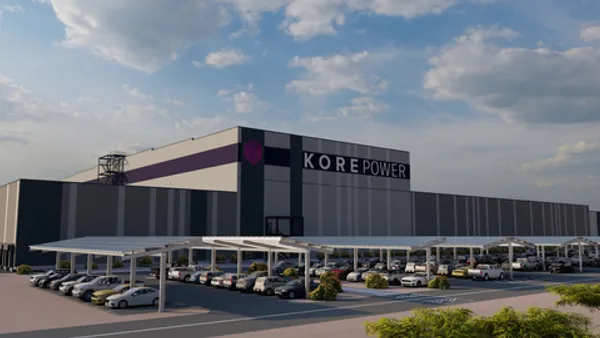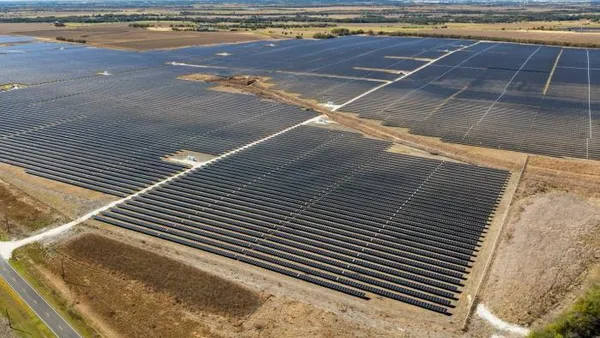The world has begun a transition to 100 percent renewable energy and to 100 percent electrified transportation, with two questions outstanding: how will we transition? And how fast?
A critical component of both these transitions is the rapid deployment of DC Fast Chargers for electric vehicles (EVs), now widely considered to present significant adaptation challenges to the host utility.
But while adaptation might be a challenge, the uptake and deployment of publicly-available DC Fast Chargers (DCFCs) provides significant opportunities for the utilities sector. With the right approach this can rapidly unlock the ability to integrate broad-scale distributed energy resources onto the grid – with the help of customers – while also providing the robust infrastructure needed for broad EV adoption across multiple industry sectors.
The Evolution of Charging and the Impact on the Grid
The first generation of plug-in Electric Vehicles came with an onboard charger that could take AC power at household voltages (110V or 220V). Essentially an EV received a “trickle” charge from an extension cord (Level 1) to charge overnight, or from a specialized AC charger with a rate of less than half a mile of range/minute (still twice as fast), taking several hours to provide a significant charge (Level 2).
Level 3 defined a faster charger, now referenced as a new class of chargers: DC Fast Charging (DCFC).
The DCFC class of EV chargers converts AC grid power to DC power outside the vehicle, then directly feeds power to the EV, bypassing the small on-board inverter. DCFC dramatically increases the rate of charge, from 5X faster (50kW DCFC) to 17X (175kW DCFC) to 30X (350kW DCFC).
As DCFC technology fuels vehicles faster and as costs drop, the race to deploy public DCFC stations has begun inside cities and along highways, placing the issue of grid integration under the microscope and on the critical path.
The Emergence and Importance of Smart Grid Interaction
In short, the high power needed for this new class of EV chargers requires grid operators to evaluate grid impacts and when necessary, grid operators must upgrade sections of the power grid. This will add to the costs and timing of EV charger deployment.
Redesigning these fast chargers with an objective of enhanced flexibility and added value is key – and this reimagining of DCFC architectures is already underway with smart, utility-interactive DC Fast Charging.
Interactive DCFC stations can be designed not just to charge EVs quickly, but to also enhance grid operations from the moment they are deployed. DCFC stations deployed along radial feeders will provide utilities with new control capabilities that leverage grid edge intelligence, sensors and Artificial Intelligence. Charging and discharging can be modulated to fine-tune grid operations, for example. When combined with fixed or mobile energy storage, DCFC can enhance the capacity of the radial feeder to integrate Distributed Energy Resources (DERs).
A key new advantage will be the development of vehicle-to-grid (V2G) technology, where an interactive DCFC device can both charge and discharge a battery, moving power two ways between an EV and the grid. Otherwise known as bi-directional charging, this capability enables a new class of energy storage – mobile batteries – as a new strategic resource that follows grid peaks, is always located where people are, and always available for peak demand reduction in building or grid support.
When connected to a smart, interactive DCFC device, an EV battery pack gains new flexibility to charge or discharge, opening many new value scenarios for utilities and their customers, leveraging the storage power of the customer’s mobile asset: the battery in their EV.
Enabling Energy Freedom: A New Era for Utilities and Customers
Collectively, the storage capacity of EVs is immense and growing with each new EV sold, and in aggregate represents the largest grid-connected battery. Consider that totaling energy across one million EVs amounts to 50 to 100 GWh of available energy storage capacity, according to industry analyst Brattle Group. In contrast, Tesla’s “big battery” in South Australia, currently the largest battery in the world, stores less than 1 GWh.
Also consider that the average daily car trip in the U.S. is only about 30 miles, while most EVs have a range of 124 to 310 miles. Current base model vehicles with a 186.4-mile range on a 60kW battery pack could run a typical house, including air conditioning, for two to three days.
Using V2G technology, EV owners could power their homes with excess energy stored in car batteries or sell it back to utilities, balancing fluctuations in energy demand. Using real-time rates, utilities could encourage EV owners to charge up during the day, when there is excess (and therefore cheap) renewably-sourced energy and sell it back to the grid during times of high demand, saving money while performing grid-balancing.
We call this concept Energy FreedomTM, and it is a concept that has clear benefits not just for the driver, but for the utility.
For drivers, Energy Freedom means they can charge their vehicles while at work or out shopping, making money by selling some of the energy stored in their EV back to the utility, and then drive home and plug the car into their home charger. As demand for energy ramps up in the evening, utilities could purchase additional power from the full EV battery.
For utilities, Energy Freedom increases the storage base for renewables, fosters customer loyalty and puts the utility at the forefront of green initiatives, all while opening up new revenue streams.
Where to From Here?
Two technology changes are needed to make this vision a reality. First, a sufficient number of EVs must come equipped with the capability for bi-directional charging; Nissan’s latest Leaf model is one such vehicle available now which is capable of bi-directional charging.
Second, DCFCs must be designed and deployed using the utility-interactive DCFC architecture; this will dramatically enhance the potential of DCFC to become a catalyst to usher in bi-directional charging.
This potential is not far from being realized – we’ve developed smart, interactive DCFC architecture; it’s here, now. And with automakers increasingly looking to install bi-directional charging as a standard inclusion, we may be looking at that 100 percent renewable, 100 percent electrified transport future sooner than we think.
Utilities will gain the technology required for faster integration and interconnection of EV chargers, while also possibly participating in several new models for additional revenue generation.
Smart DCFC infrastructure will help utilities create a ‘pivot point’ for grid modernization, unlocking the transformation required for significant growth opportunities while meeting clean energy mandates.
Jeff Wolfe is President, Americas for Tritium, a technology company that designs and manufactures the world’s most advanced DC fast-charging equipment for electric vehicles (EV).
Jeff and Tritium’s CEO and co-founder, David Finn, will unveil their vision for the future of the EV sector when they present on the International Innovation Platform at South by Southwest® (SXSW®) Interactive in Austin, Texas on Tuesday, March 12 from 2:30-3:30PM.









